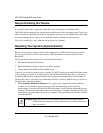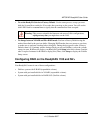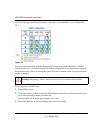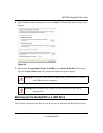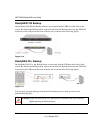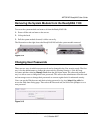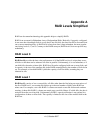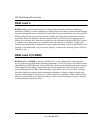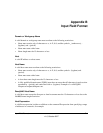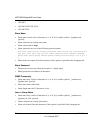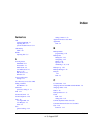
NETGEAR ReadyNAS User Guide
A-2 RAID Levels Simplified
v1.0, October 2007
RAID Level 5
RAID level 5 provides the best balance of capacity and performance while providing data
redundancy. RAID 5 provides redundancy by striping data across three or more disks and keeping
the parity information on one of the disks in each stripe. In case of disk failure, the surviving disks
and the parity disk are used to reconstruct the lost data, providing data transparently to the user
application. When the failed disk has been replaced with a good disk, the reconstructed data is
written out to the new disk; when the reconstruction (or sometimes referred as RESYNC) process
is complete, the volume returns to a redundant state. The capacity of a RAID 5 volume is the
smallest disk in the RAID set multiplied by one less than the number of disks in the RAID set. For
example, a four-disk RAID 5 set provides the capacity of three disks, assuming all four disks are
identical in size.
RAID Level X (X-RAID)
RAID level X, or X-RAID, is similar to RAID level 5, as it is optimized for large sequential
access for the best possible media streaming performance. The X also refers to its natural volume
eXpandability. In X-RAID mode, with one disk, the volume is non-redundant and has the capacity
of the single disk. By adding a second disk, the capacity remains the same, but the data is now
mirrored between the two disks. With redundancy, your data is not lost if a disk fails. Adding a
third disk doubles the capacity while maintaining redundancy. Adding a fourth disk triples the
capacity with redundancy. The process of volume expansion is automatic. When a disk has been
added, you are notified of the steps being taken, and you are notified when you need to reboot to
continue with the expansion process.



